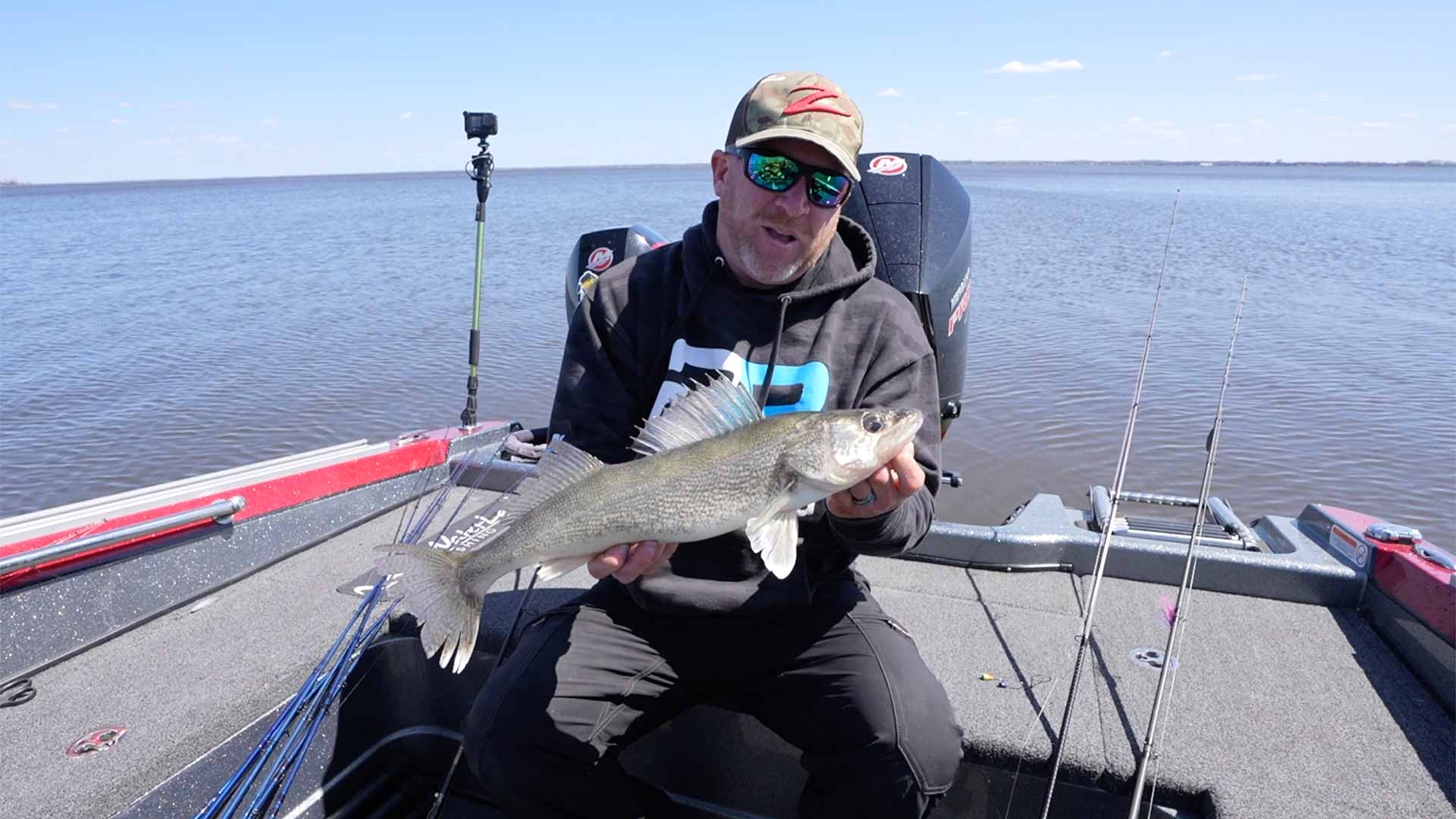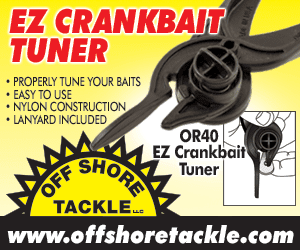We are on the hunt targeting big Bluegills. The key is to stay mobile and utilize your electronics. We have been messing around with a new way to use electronics to help you be more efficient.
We start by looking at the map and finding what we believe may be key areas for big gills. Weed beds, main lake points, and other areas of the structure that may hold those large-caliber gills we are after.
Once we arrive we drill a single hole and drop down the Humminbird 360 imaging. We have it mounted to a plank of wood and have it hooked up to a Helix screen. By doing this we have a 360-degree view around us.
We have it set at 80 feet so I can see what is down there 80 feet in every direction. It allows you to eliminate a lot of dead water and we’re not going to fish anywhere that we don’t see quite a few fish in a school.
We will scan an area for 3 minutes and if we don’t see what we are looking for a pack up and move on to the next spot.
Once you locate a school you’ll want to punch out the whole area, because these schools often roam across the structure. You find that small moves can make a huge difference. You may be fishing a hole with your screen empty, but a hole ten feet away could just be loaded with fish. The key is staying on the school once it’s found.
When it comes to baits for targeting big Bluegills you really have to read the mood of the fish and be ready to change often.
When you mark a fish with your flasher see how it reacts to your bait. Vary your jigging cadence and figure out what gets the fish to commit to your bait. It may take some time to figure out what the biggest gills want, they have a tendency to be very picky.
Being Mobile and Efficient
One of the keys to successful ice fishing is being mobile. We need to drill holes and move around to find the fish. To make this process easier, we have a portable ice house that can be easily detached from the truck. This allows us to quickly move to different locations and drill holes where we think the fish might be.
Using Technology to Find Fish
To find fish efficiently, we’re utilizing a 360-degree sonar unit. Brad is driving the truck while Clay and I sit on the tailgate, drilling holes and dropping the 360 unit into the water. We can then view the sonar readings on a Humminbird Helix screen, which allows us to see the fish below us. This technology is similar to side imaging on a boat, where we can identify the fish as little white specks on the screen.
The Mega 360 system has proven to be incredibly accurate. It provides a 160-foot circle of visibility, allowing us to see fish up to 80 feet in either direction. We let the unit rotate for a few minutes, looking for the hot white dots that indicate the presence of fish. Once we’ve identified a promising spot, we drill our holes accordingly.
Making Small Moves for Big Results
When it comes to bluegill fishing, even small moves can make a big difference. We’ve learned that the fish aren’t evenly distributed throughout the lake, so it’s important to find the right spot. We’ve had success catching bluegills in one hole, while the adjacent hole might be empty. It’s all about finding the active fish.
The Joy of Catching Big Bluegills
As we continue our search, we’re thrilled to catch some nice bluegills. While we’re hoping for even bigger ones, the ones we’re catching are still impressive. We release the larger bluegills back into the water, knowing that by doing so, we’re helping to maintain a healthy population of big bluegills for future trips.
Detecting Up Bites
One of the challenges of ice fishing for bluegills is detecting up bites. To do this, we rely on our line and rod setup. A straight line across the eyelets indicates that the line is properly aligned. When jigging, we look for a slight bend in the rod, indicating that a fish has taken the bait. If the rod tip is level or slightly raised, it’s time to set the hook.
Choosing the Right Rod
When it comes to ice fishing for bluegills, choosing the right rod is crucial. We discuss two popular options: the Precision Noodle and the Bull Whip. The Precision Noodle is our go-to panfish rod, perfect for fishing with 2-5 mil jigs. It offers a sensitive and flexible action, allowing us to detect even the slightest bites. On the other hand, the Bull Whip is ideal for heavier jigs and spoons, providing the power and strength needed to handle larger fish.
The Importance of Catch and Release
Throughout our fishing trip, we emphasize the importance of catch and release. By releasing the larger bluegills, we’re ensuring the sustainability of the fishery. It’s a way to show our appreciation for these beautiful fish and to preserve the opportunity for future anglers to experience the thrill of catching big bluegills.










